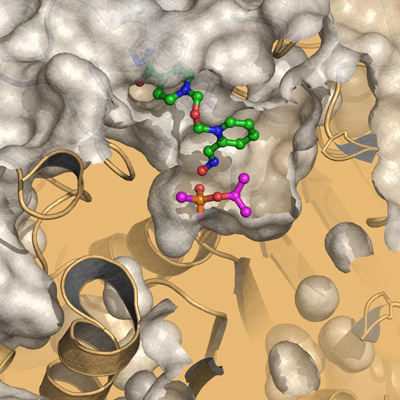New nerve agent antidotes in sight, say researchers
Posted: 3 May 2016 | Victoria White, Digital Content Producer | No comments yet
The deadly nerve agent sarin can be stopped if treated with an antidote. Now, a new study describes how such a drug works…


The nerve agent sarin causes a deadly overstimulation of the nervous system that can be stopped if treated with an antidote within minutes of poisoning. Now, a ground-breaking study describes in detail how such a drug works.
Nerve agents destroy the function of a the protein acetylcholinesterase. As long as the nerve agent is bound to the protein, the breakdown of an important signal substance is prevented. The antidote HI-6 removes the nerve agent and restores the function of the nervous system. Drugs against nerve agent poisoning have been used for a long time but until now it has been unclear how they actually work.
After years of hard work, chemists from the Swedish Defence Research Agency and Umeå University are now presenting a three-dimensional structure that depicts the HI-6 moments before the bond between the nerve agent and the protein is broken. The structure gives a high-resolution image that, in detail, describes the individual positions of atoms and provides an understanding of how the bond breaks.
Combining data
The scientific breakthrough was enabled by combining three-dimensional structural depictions with advanced calculations and biochemical experiments.
“With the help of X-ray crystallography, we could see weak traces of the signal we were looking for. As the signal was weak, we decided to integrate the data with quantum chemical methods. After demanding calculations on the supercomputer at the High Performance Computing Centre North (HPC2N) at Umeå University, we finally succeeded,” says Anna Linusson, Professor at the Department of Chemistry at Umeå University.
The calculations supported the theory that the weak signal in the X-ray crystallography data actually came from HI-6 and sarin. Important knowledge also fell into place after experiments where the system was disturbed by mutating the protein or by introducing isotopes.
“After seven years of work using many different techniques, we have finally been able to bring this to a successful close and can show a uniform picture of how HI-6 approaches sarin. It opens up for new opportunities in finding antidotes to sarin and other nerve agents by structure-based molecular design,” says Anders Allgardsson, Biochemist at the Swedish Defence Research Agency.
Related topics
X-ray Crystallography
Related organisations
Umeå University



